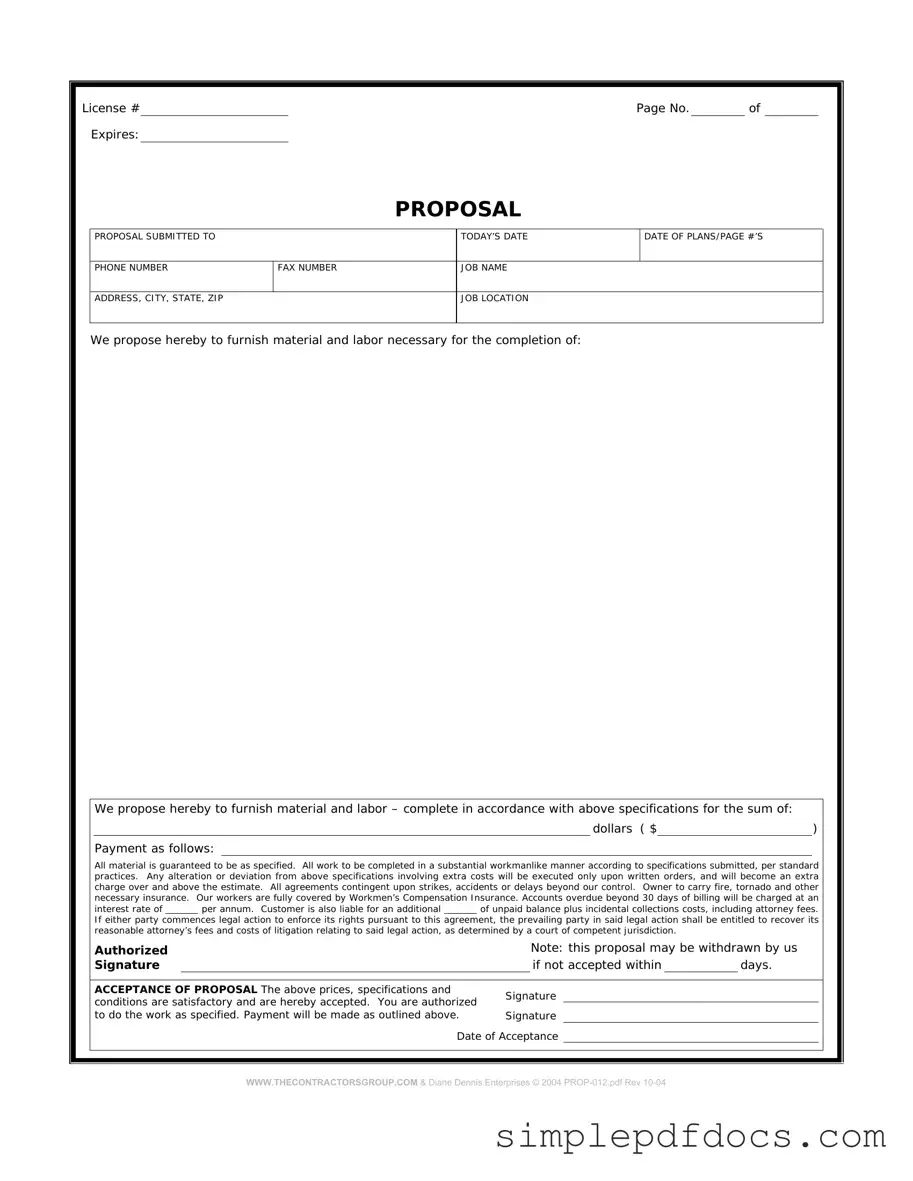The Construction Proposal Form is a critical document in the construction industry, serving as a formal request for project bids and outlining essential project details. This form typically includes sections for the contractor’s information, project specifications, and estimated costs, which together facilitate clear communication between contractors and clients. By detailing the scope of work, timelines, and materials required, the form helps to set expectations and guide the bidding process. Additionally, it often requires the inclusion of terms and conditions that govern the contractual relationship, ensuring that both parties understand their obligations. The accuracy and completeness of the information provided on this form can significantly influence the selection of a contractor, the project's budget, and its overall success. Understanding the nuances of this form is crucial for all stakeholders involved in construction projects, as it lays the groundwork for effective collaboration and project execution.
